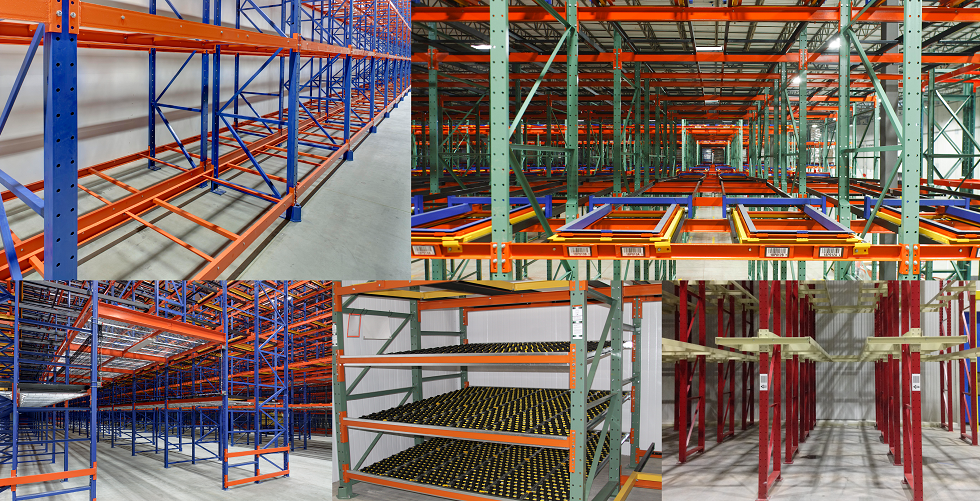When properly designed, constructed, installed and maintained, a pallet rack system will provide years of safe, trouble-free service. When properly engineered, pallet rack systems are loaded well within their ultimate design capacity and the stress caused by day-to-day loading and unloading cause virtually no “wear” to the structural components. If properly used and not damaged, we have seen 25 year old systems still functioning well. The biggest cause of rack failure, or need for replacement is damage from lift truck impact. While operator training plays a key part in preventing damage, there are a few key principles that we recommend to our customers to build systems that last:
1. Aisle Width:
A great deal of damage occurs when lift equipment rotates in and out while placing loads. The lift truck operator often has difficulty seeing the upright post behind him and when aisles are too narrow can back directly into the frame or beam causing damage to the rack system. We always recommend adding an extra buffer (12”) to the minimum aisle width recommended by the lift truck manufacturer.

2. End Aisle Protection:
Unprotected frames on end aisles are frequently damaged as lift truck operators enter and exit aisles. End aisle protection can range from bollards sunk in concrete, to free standing systems anchored to the floor, to systems bolted directly into the rack frames. If the guards are bolted to the rack framing, be sure to select heavy duty, impact resistant components for the end aisle frames.
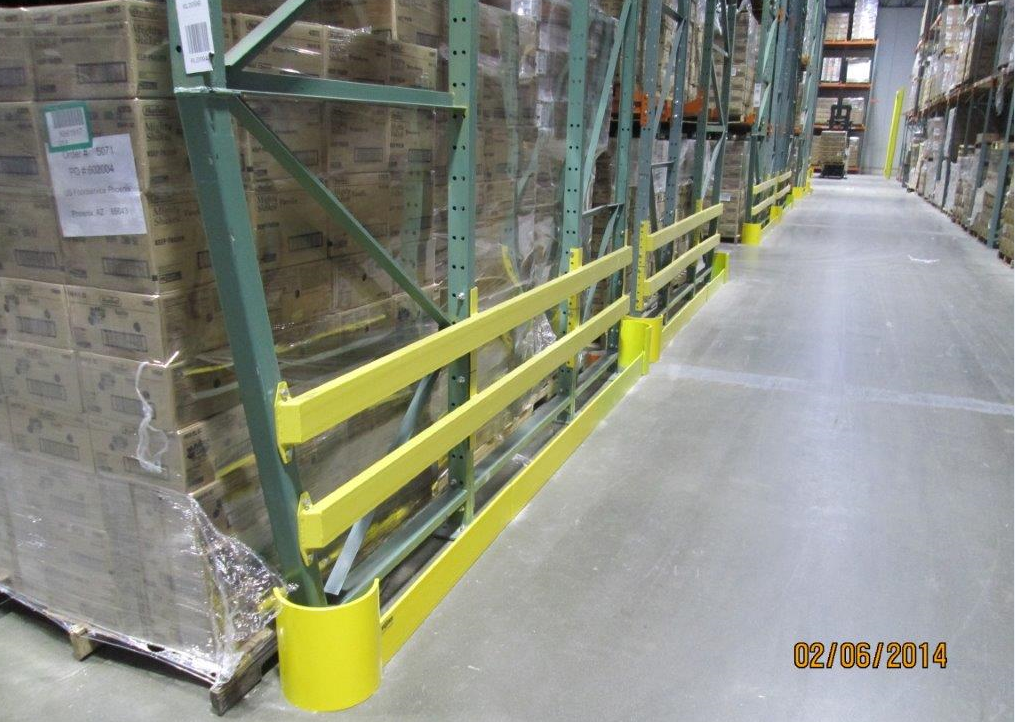
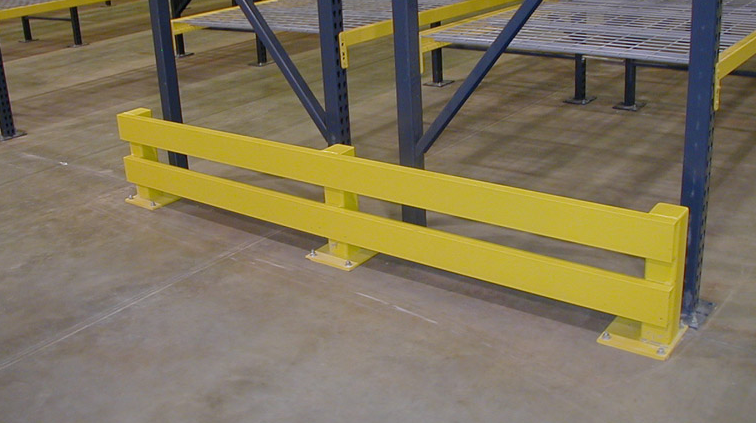
End Aisle Guard (Rack Mounted + Free Standing)
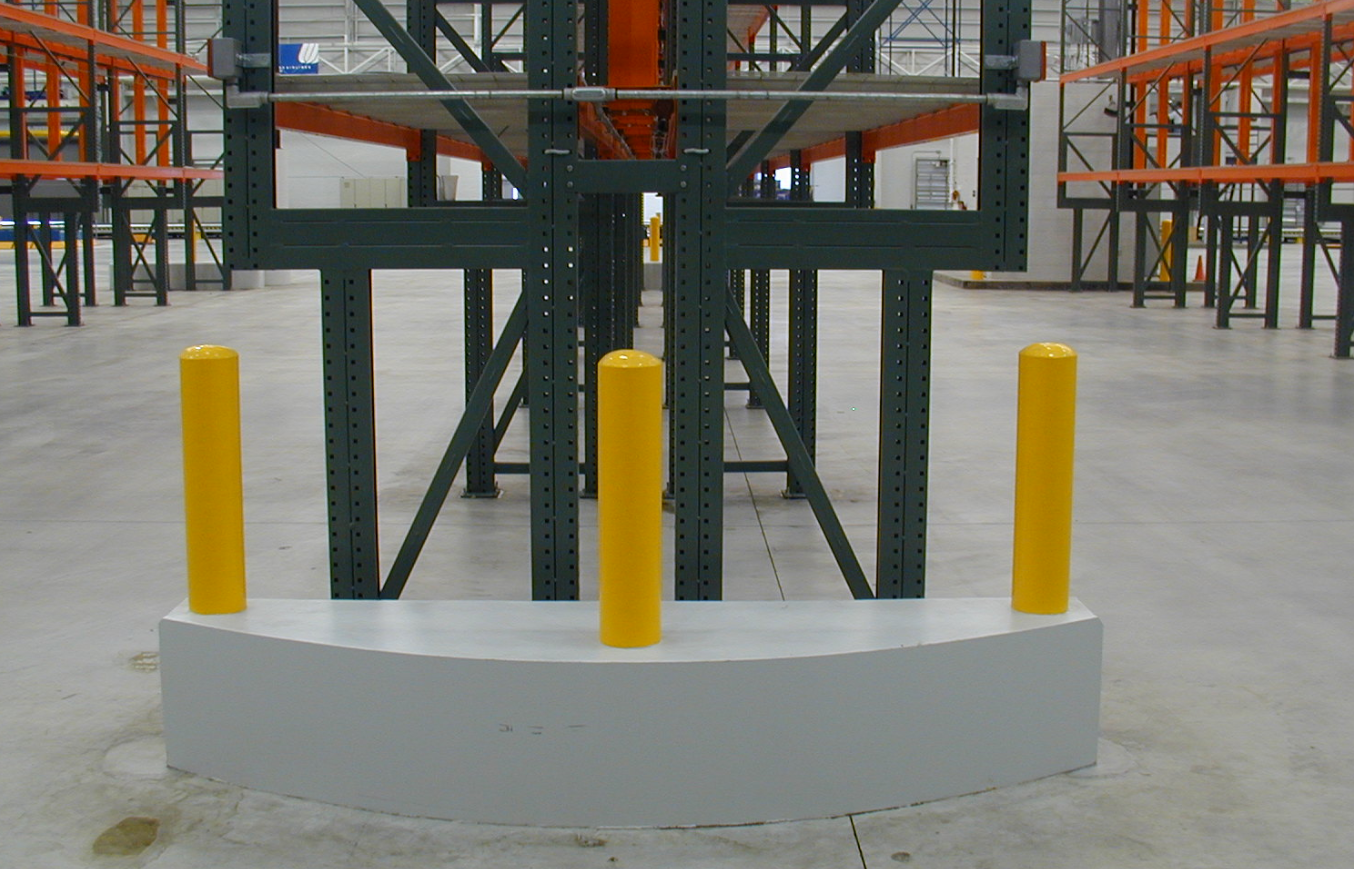
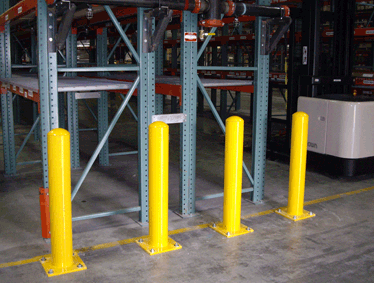
Bollard
3. Floor Level Load Beams:
Beams that are located close to the floor can often be hard for an operator to see and are very easy to back into and damage, especially with systems that have narrower aisles. In these cases we will often install heavy duty tube beams that have the strength and durability to withstand the impact. These tube sections can have over 3 times more resistance to impact damage than a channel or light duty step load beam. C4”x4.5 vs. 3/16” x 4” x 2” tube.



4. Damage to Upright Frames:
The vast majority of damage to upright frames occurs below the first beam level in what we call the “impact zone”. We employ a number of strategies to combat this:
- Doubling the uprights to the first level: In most of our long term systems, all of the aisle facing frames are doubled (two channels welded together creating a tube section) up to the first beam level. This doubled section is over 4 times stronger and more resistant to horizontal impact when compared with a conventional unreinforced frame and stronger than an unreinforced roll form section. For an example of the difference, see the video Choosing the Right Rack System for your Warehouse.
- Heavy bracing and lower horizontal: In the damage zone, we will often strengthen the bracing and lower horizontal to further strengthen the frame against lift truck impact. This welded bracing can add 2 times additional strength to the frame. A heavy bottom horizontal (typically a Heavy “C” channel in place of an angle section) provides a smooth surface for pallets to slide against if they are inserted too close to the upright frames.
- Column Protectors: Often we will weld column protectors to the face of the rack to provide additional damage protection. These can range from 6” and at times all the way up to 48” or higher. For additional protection customers will often select bull nose protectors where an anchor is placed inside the bull nose in front of the column. This style of protection has the added benefit of providing over 50% more resistance to down aisle damage when compared with conventional anchoring combinations.
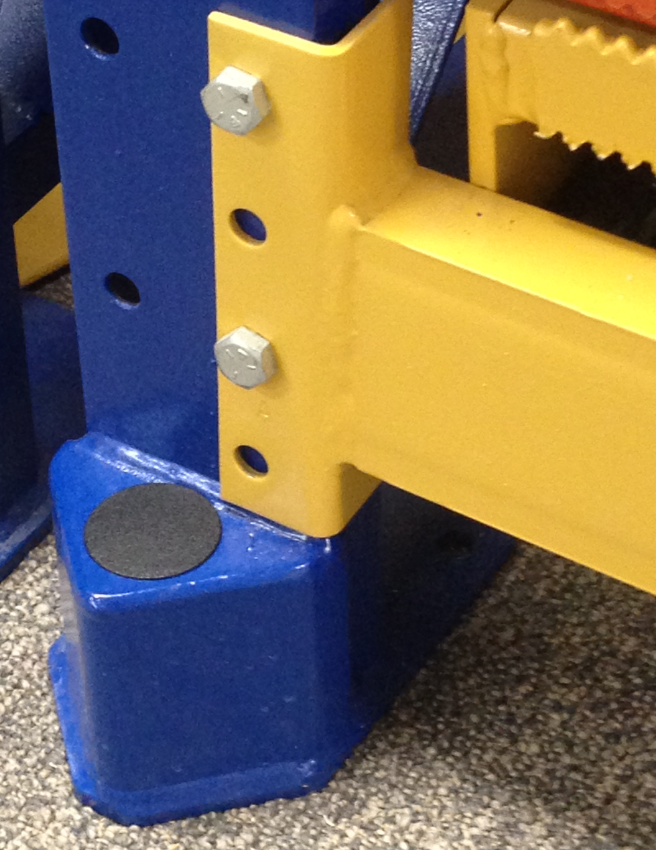


Bull Nose Welded Angle Column Protector
- Slope/slant and Offset Legs: With stand up lift trucks, damage will often be caused by the outriggers impacting the upright frame when the lift rotates into the loading position. By offsetting the frame the outrigger can now slide under the frame if the operator overshoots which significantly reduces damage.

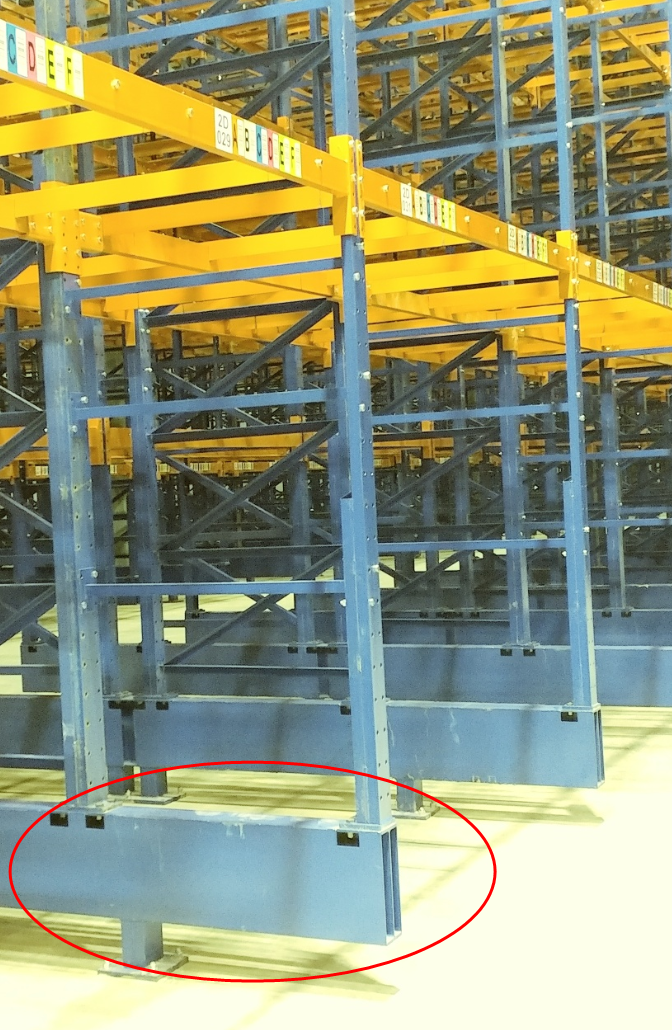
Offset Legs Cantilevered Base

Offset Legs

Slant Leg
- Anchoring Pattern: Floor anchors are a critical component to the stability and life of the racking systems. Where every possible, best practice is to “hide” the anchors behind the upright columns so that they do not get damaged by the outriggers or loads as materials are placed and removed from the system.


Exposed Anchor Anchor Hidden Behind Upright
There is no one single answer to create a 20 year racking system, but by following good design practices, and investing in the right material in the “impact zone”, you can create a system that will be there when your kids graduate from college.

